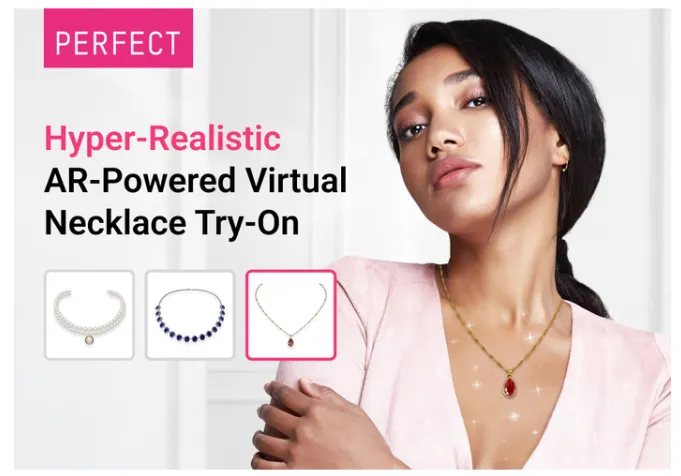From Virtual Try-Ons to Reality: The Accuracy of AR in Jewelry

The augmented reality (AR) field has expanded beyond gaming and entertainment. One of the most intriguing applications is that of AR in jewelry, where virtual try-ons are becoming increasingly popular. But how accurate are these virtual experiences compared to actually wearing the jewelry? Read on to explore the effectiveness and precision of AR in the field of rings, necklaces, and earrings.
Contents
What is AR and How Does It Work in Jewelry?
AR integrates digital information with the natural world in real time, allowing users to see how a product would look on them without physically trying it on. In jewelry shopping, AR technology lets consumers visualize how a piece would appear on their body through a smartphone or computer screen. This is achieved through AR software that uses the device’s camera to capture real-time images of the user and superimposes a 3D model of the jewelry onto their image on the screen.
The Accuracy of Try-Ons
Visual Representation
The first factor in the accuracy of AR jewelry try-ons is the visual representation of the pieces themselves. High-quality systems use detailed 3D models that accurately reflect the jewelry’s size, shape, and color. Lighting effects are also crucial, as they must mimic real-world conditions to ensure that the shine and sparkle of metals and gemstones are realistically portrayed.
Sizing and Fit
Another critical aspect is the representation of sizing and fit. AR technology should be capable of adjusting the jewelry scale based on predefined sizes or automatic scaling that adapts to the user’s physical dimensions captured by the camera. This can help customers gauge a piece’s fit, whether a ring, bracelet, or necklace.
User Interaction
The accuracy also depends on the user’s interaction with the virtual model. This includes rotating the piece, trying it on different body parts, and viewing it from multiple angles. The more interactive the experience, the better the user can understand how the piece might look.
Benefits of AR in Shopping
Convenience and Accessibility
One of the primary benefits of AR in shopping is the convenience it offers. Customers can try on multiple pieces from the comfort of their homes, reducing the need to visit various stores. This is particularly advantageous for people without easy access to jewelry stores.
Enhanced Customer Confidence
AR can enhance customer confidence in their purchase decisions. Providing a realistic preview of how these items look on them helps reduce the uncertainty that often accompanies online shopping.
This can result in increased customer satisfaction and reduced rates of returns.
Customization Options
AR can offer a preview of different options for custom jewelry, allowing users to select colors, metals, or gemstone arrangements. This personalized shopping experience can significantly enhance customer satisfaction and loyalty.
Limitations and Challenges
While AR in jewelry offers numerous benefits, its accuracy still has several challenges and limitations. Lighting conditions vary significantly in different environments, which affects how jewelry appears through AR compared to real life. Screen resolutions and quality can also impact the visualization of fine details.
Future Prospects
As technology advances, the accuracy of AR try-ons is expected to improve. Future developments could include better integration with artificial intelligence to offer personalized recommendations based on user preferences and previous interactions. Furthermore, advancements in camera technology and software algorithms will enhance the detail and realism of AR models.
AR in jewelry transforms how consumers shop for and interact with jewelry. While the technology still has some limitations, the benefits—such as increased convenience and boosted consumer confidence—make it a promising development in the jewelry industry. As AR technology progresses, it is set to become an essential resource for both consumers and retailers in the jewelry industry.



